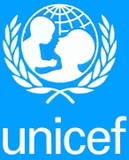The United Nations Children’s Fund (UNICEF) has released a report assessing global progress in reducing child mortality, which shows that AIDS remains a leading cause of death among children under five. While there has been a significant decrease in the number of deaths among this age group, from 12 million in 1990 to 6.9 million in 2011, the number of AIDS-related deaths remains relatively high, particularly in sub-Saharan Africa.
Despite significant improvements in the overall scale-up and coverage of child treatment and prevention of mother-to-child transmission (PMTCT) services, these continue to be cited as the biggest gaps in the response to curbing the HIV and AIDS epidemic among children. Coverage of antiretroviral (ARV) treatment for children remains much lower than for adults – 28% and 57% respectively, with the report highlighting the need to improve paediatric testing and diagnostics. In 2011, 57% of an estimated 1.5 million pregnant women living with HIV in low and middle income countries accessed ARVs to prevent the virus being transmitted to their babies. Whilst this is a positive development, vertical transmission is still a major problem in these countries.
One PMTCT method, known as Option B+, which was introduced by the World Health Organisation in April 2012, is being hailed a ‘game-changer’ for countries with high rates of mother-to-child HIV infections. Pioneered in Malawi in 2010, Option B+ involves providing triple ARV drugs to all HIV positive women during pregnancy and continuing with treatment for the rest of their lives. This enables women to be protected during all future pregnancies as well as improving the woman’s general health, lowering rates of drug resistance and reducing rates of infection to HIV negative partners. Crucially, Option B+, which was recently launched at national level in Uganda, has been proven to be effective in reducing vertical transmission rates and ultimately prevalence of HIV among children.

